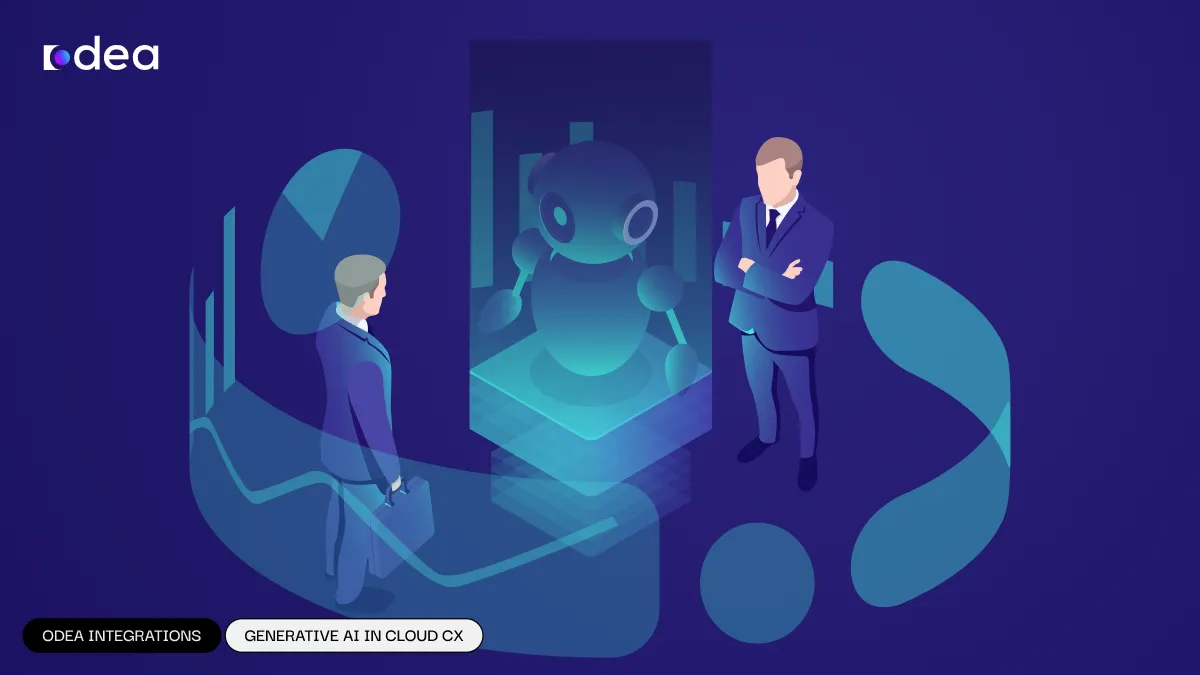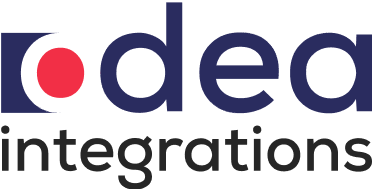Call Summarization plays a pivotal role in optimizing operational efficiency and enhancing customer experience within Cloud CX Platforms. In today’s fast-paced digital world, businesses interact with customers on various platforms, making it crucial to capture key details from every call.
However, manually summarizing calls can be a cumbersome task, often leading to delays, inconsistencies, and errors. This not only impacts agent productivity but also diminishes the overall customer experience, particularly in high-volume contact centers.
By leveraging the power of Generative AI, businesses can automate the process of call summarization, ensuring accurate, consistent, and timely summaries with minimal effort.
This automation not only helps agents save valuable time but also ensures that customer interactions are summarized in real time, allowing for better follow-up actions and faster resolutions.
In this article, we will explore how Call Summarization through Generative AI is reshaping the landscape of customer service and empowering Cloud CX Platforms to deliver exceptional customer experiences.
The Challenges with Manual Call Summarization
As contact centers handle increasing volumes of interactions, the need for efficient and accurate call summarization becomes ever more critical. Despite its importance, manual summarization has several inherent challenges that can hinder its effectiveness:
- Time-Consuming Process: Manually summarizing a call is a tedious task, often consuming up to one-third of the total call duration. This puts pressure on agents, leading to longer Average Handle Times (AHT), which negatively affects both agent productivity and customer satisfaction.
In fast-paced environments, agents may rush through these tasks, leading to incomplete or inaccurate summaries. - Inconsistent or Inaccurate Summaries: Given the time constraints, agents may skip summarizing calls altogether or fail to provide a comprehensive record of the interaction.
This becomes a significant issue when customers are transferred between agents, forcing them to repeat their problems.
This not only frustrates customers but also undermines the customer experience (CX), especially when dealing with complex issues that require context. - Negative Impact on Key Metrics: Longer times spent on manual tasks like summarizing calls directly affect important contact center metrics, including Average Handle Time (AHT) and First Call Resolution (FCR). The inefficiencies created by manual summaries not only frustrate customers but also strain agent performance, making it harder for the center to achieve optimal service levels.

Generative AI: Revolutionizing Call Summarization
Generative AI is transforming how customer calls are summarized by making the process both faster and more accurate. By leveraging large machine learning models known as foundation models (FMs), which are trained on vast datasets, generative AI can generate concise and coherent call summaries based on the content of the conversation.
Specifically, Large Language Models (LLMs), a subset of FMs, specialize in understanding and generating natural language, making them ideal for summarizing calls effectively.
The best LLMs are capable of processing complex sentences and identifying key details such as topics, customer intent, next steps, and outcomes.
By automating the call summarization process, LLMs save significant time compared to manual methods, which helps contact centers improve customer experience and reduce the effort agents need to spend on documentation.
Integration with Existing Systems
Generative AI is not standalone—its effectiveness relies on accurate transcription of the call itself. High-quality transcription is the foundation for generating accurate summaries.
In many cloud-based platforms, such as Amazon Transcribe, real-time transcriptions are provided, which can then be used to create summaries that agents can easily access.
For companies using Amazon Connect, a comprehensive Cloud CX Platform, Contact Lens for Amazon Connect offers native capabilities like call transcription and real-time analytics.
Similarly, the HubSpot CTI integration can further enhance efficiency for sales and support teams by automating workflows, capturing data accurately, and seamlessly integrating with platforms like Amazon Connect,you can read more about Maximizing Efficiency with HubSpot CTI Integration for Sales & Support.
After a call ends, Generative AI can be used to generate post-call summaries, allowing agents to review detailed insights of the conversation, key actions, and customer sentiment. With this setup, agents have more time to engage with customers rather than focusing on manual documentation.
Moreover, Odea Integration can help further streamline this process by integrating cutting-edge solutions like Salesforce and Zendesk with AI-powered call analytics.
This integration makes it easier to track customer interactions and improve agent performance with data-driven insights, ultimately optimizing both CX and operational efficiency.
To deepen your understanding of how AI optimizes performance, check out our article on Empowering Support: Zendesk CTI Integration in Action.
Architecture for Efficient Call Summarization
In Amazon Connect, much of the heavy lifting is performed by the platform itself. It provides transcription, real-time analytics, and summaries, all of which are critical for enhancing the customer experience.
The architecture for integrating these features involves a Lambda function that processes the data generated from each call and stores it in DynamoDB. This data can be accessed in real-time or post-call through API Gateway, making it easily available to agents and supervisors.
Here’s an overview of how this works:
- Set recording and Analytics block: First, you need to add a Set recording and Analytics block to the IVR flow in Amazon Connect. This will ensure that the calls are being recorded and analyzed for transcription and summarization.
- Configure properties: Once the block is added, configure its properties to include Call Recording for both the agent and customer, and turn on Analytics to enable real-time and post-call analytics.
- Enable speech analytics: Enable speech analytics to detect critical data points from the conversation.
- Post-contact summary: Under the Contact Lens for Amazon Connect settings, enable post-contact summary so that Generative AI can generate detailed summaries of the call for future reference.
- Permissions: Ensure that the appropriate permissions are assigned to agents, supervisors, and administrators to access and analyze the summaries as needed.

The Advantages of AI-Powered Summarization
- Time Efficiency: One of the most significant benefits of automating the call summarization process is the reduction in time agents spend on documentation.
This not only increases agent productivity but also reduces Average Handle Time (AHT), allowing agents to focus on more complex tasks.
- Improved Accuracy: By automating the process, AI ensures that all important elements of the conversation, including customer issues, next steps, and follow-up actions, are captured with greater accuracy.
This eliminates errors commonly found in manually written summaries.
- Enhanced Customer Experience: With accurate and real-time summaries, agents can easily access the information needed to resolve customer issues quickly.
This leads to higher First Call Resolution (FCR) rates and more satisfied customers.
- Agent Productivity: AI-driven call summarization reduces the burden on agents, allowing them to manage more calls and handle customer inquiries more effectively. This, in turn, boosts overall employee satisfaction and reduces burnout.
- Actionable Insights: AI-powered tools can analyze data from calls and generate insights that help contact centers improve their operations.
These insights might include identifying common customer issues, understanding customer sentiment, or spotting trends in call volume, all of which can drive strategic decision-making.
For more insights on how to boost call center productivity with CTI tools, read our article on Leveraging GoHighLevel CTI for Enhanced Call Center Productivity.
How Odea Integration Elevates Call Summarization with AI

Odea Integration plays a pivotal role in helping businesses unlock the full potential of AI-powered call summarization. By seamlessly integrating leading platforms like Amazon Connect with CRMs such as Salesforce and Zendesk, Odea enables real-time synchronization of summaries, call transcripts, and actionable insights.
This reduces time spent on post-call tasks and ensures agents always have the full context during customer interactions.
Through custom-built connectors and tailored automation, Odea helps businesses move away from outdated manual processes toward intelligent Cloud CX systems that improve both agent efficiency and the overall customer journey.
Whether it’s reducing Average Handle Time or providing decision-makers with analytics dashboards that surface hidden patterns, Odea turns raw call data into strategic business value.
Conclusion
Real-time call summarization powered by Generative AI is no longer a luxury—it’s a necessity for contact centers aiming to stay ahead. By eliminating the inefficiencies of manual processes, businesses can boost agent performance, shorten Average Handle Time (AHT), and significantly enhance customer satisfaction.
Platforms like Amazon Connect, when combined with the tailored integration services of Odea Integration, empower you to unlock powerful insights, improve operational agility, and deliver CX that truly sets you apart.
Ready to elevate your contact center? Let Odea Integration help you transform your call summarization strategy—starting today.





